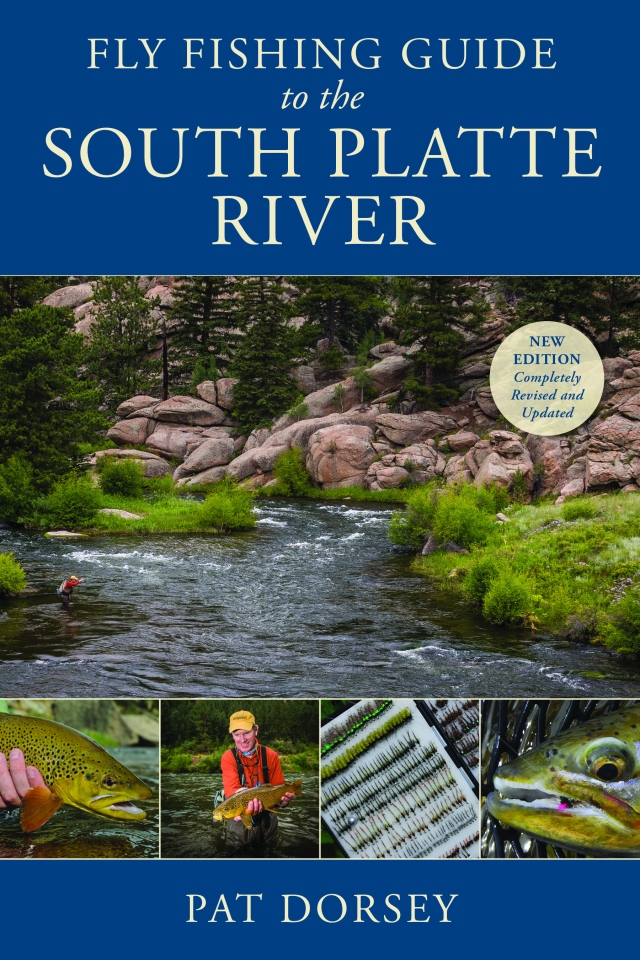I’ve never fished the South Platte. I have no immediate plans to do so. But dammit, now I’ve read this book. And the gears are turning.
Such is the power of the second edition of Fly Fishing Guide to the South Platte River. Although Pat Dorsey is listed as the author, contributors to the book are many, and the list reads like a western U.S. fly angling who’s who: Landon Mayer. Greg Blessing. Just to name a few.
The book is neatly organized into three sections. Part 1 is The South Platte System, which divides the water into geographical sections. You get details like maps, access points, water descriptions, and seasonal strategies. The chapters are sprinkled with sidebars like “High Water Season,” “Etiquette,” and “Year-Round Strategies to Find Trout.” These are informative and they don’t intrude on the reading experience. I’m impressed by the level of detail, and the intrepid reader receives enough comprehensive information to DIY the South Platte.
Next up is Important Hatches and Fly Patterns. It’s just what you’d expect: hatch charts, monthly descriptors, and — my favorite — fly patterns. As a fly tying geek I am always on the lookout for inspiration and intel, as well as the hot local pattern that will work the same wonders here in the eastern U.S. (Yeah. Pale Olive Midge Larva. I’ve got my eye on you.) It’s no surprise that as a tailwater, much of the focus is on midges. Last, we get Techniques and Strategies on how to attack the river. As with the entire book, this section is richly illustrated with photos of trout and breathtaking scenics.
Quibbles are few. As is the norm for many contemporary fly fishing books, wet flies and wet fly fishing are conspicuously absent. (I’d love to swing a team of three through some of the water illustrated in the book — or give trout rising to PMDs a look at The Magic Fly.) And the only featured mention of wet fly presentation (the Leisenring Lift) pertains to nymphing — and it gets the technique wrong (the angler does not physically raise the flies — the angler checks the rod and lets current and tension do the work.)
Nonetheless, Fly Fishing Guide to the South Platte River is highly recommended. Pat Dorsey should be commended on his skillful blending of situational river specifics and general trout knowledge. If you’re heading west to fish the South Platte, you’ll be glad you invested in a copy.
“…lush valleys, meandering meadow streams, and rose-colored, boulder-filled canyons.” Where do I sign up? Just south of Denver, Colorado, this world-class trout fishery comes to life in Pat Dorsey’s Fly Fishing Guide to the South Platte River. If you’ve never fished the river, this book is a must have, with new maps and updated river, access, and fishing information. Fly Fishing Guide to the South Platte River by Pat Dorsey, Stackpole Books, ISBN 978-0-8117-3818-7.










